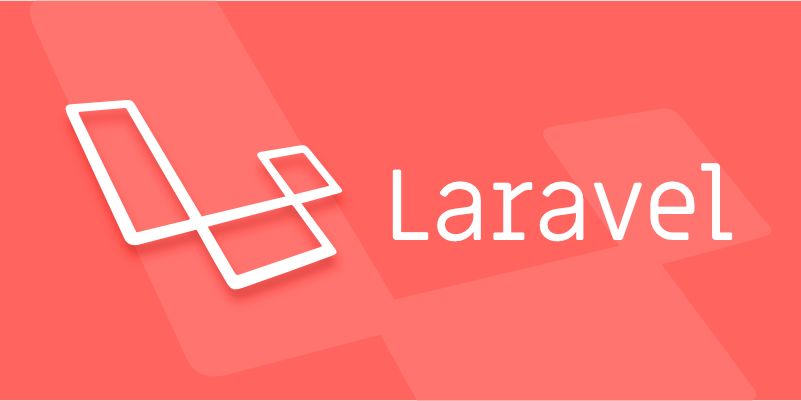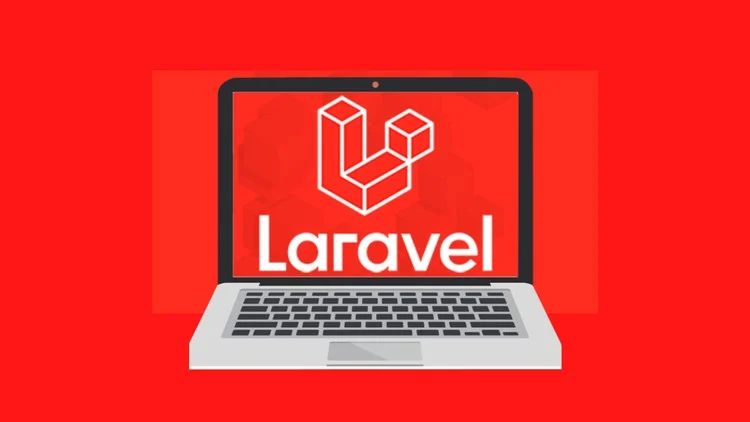Eloquent ORM is Laravel's built-in object-relational mapping system. It operates the database through PHP syntax instead of native SQL, making the code more concise and easy to maintain; 1. Each data table corresponds to a model class, and each record exists as a model instance; 2. Adopt active record mode, and the model instance can be saved or updated by itself; 3. Support batch assignment, and the $fillable attribute needs to be defined in the model to ensure security; 4. Provide strong relationship support, such as one-to-one, one-to-many, many-to-many, etc., and can access the associated data through method calls; 5. Integrated query constructor, where, orderBy and other methods can be called chained to build queries; 6. Support accessors and modifiers, which can format data when obtaining or setting attributes; 7. Has database irrelevance, SQL injection protection, and Laravel The advantages of seamless integration of other functions; for example, User::find(1)->posts can obtain all the user's articles, while $user->delete() will automatically perform deletion operations, and all SQL is automatically processed by Eloquent. Developers only need to focus on PHP logic, so Eloquent greatly improves development efficiency and code readability.

Eloquent ORM is Laravel's built-in Object-Relational Mapping (ORM) system, which provides a simple and elegant way to interact with your database using PHP syntax instead of writing raw SQL queries.

Instead of thinking in terms of tables and rows, Eloquent lets you work with database records as if they were PHP objects , making your code cleaner, more readable, and easier to maintain.
What Does ORM Mean?
ORM stands for Object-Relational Mapping . It's a programming technique that connects object-oriented code to relational databases. With Eloquent:

- Each database table corresponds to a model (a PHP class).
- Each record (row) in the table is represented as an instance of that model.
- You can perform CRUD operations (Create, Read, Update, Delete) using methods on the model.
For example, if you have a users table, you'd create a User model, and then do things like:
$user = new User; $user->name = 'John Doe'; $user->email = 'john@example.com'; $user->save();
This inserts a new user into the database — no SQL required.

Key Features of Eloquent
1. Active Record Pattern
Eloquent uses the active record pattern , meaning a model instance can save itself to the database.
$user = User::find(1); $user->name = 'Jane Doe'; $user->save(); // Automatically updates the record
2. Mass Assignment & Fillable Attributes
You can insert or update multiple fields at once using create() or update() , but you must specify which attributes are mass-assignable for security:
User::create([
'name' => 'Alice',
'email' => 'alice@example.com'
]);In your model:
class User extends Model {
protected $fillable = ['name', 'email'];
}3. Relationships Made Easy
One of Eloquent's strongest features is how it handles relationships between models.
Common relationship types include:
- One to One
- One to Many
- Many to Many
- Has Many Through
- Polymorphic Relations
Example: A User has many Posts :
class User extends Model {
public function posts() {
return $this->hasMany(Post::class);
}
}Now you can access them like:
$posts = User::find(1)->posts;
4. Query Builder Integration
Eloquent models inherit Laravel's powerful Query Builder , so you can chain methods to filter results:
$activeUsers = User::where('active', 1)
->orderBy('name')
->get();5. Accessors, Mutators & Attributes
You can format or modify data when getting or setting model properties.
For example, automatically capitalize a name when setting it:
public function setNameAttribute($value) {
$this->attributes['name'] = ucfirst($value);
}Or format a full name when accessing:
public function getFullNameAttribute() {
return $this->first_name . ' ' . $this->last_name;
}Why Use Eloquent?
- Cleaner code : No messy SQL strings scattered in your PHP.
- Database agnostic : Switch databases (MySQL, PostgreSQL, etc.) with minimal changes.
- Built-in security : Protection against SQL injection via parameter binding.
- Powerful relationships : Define and use complex relationships with minimal code.
- Integrated with Laravel : Works seamlessly with other Laravel features like controllers, middleware, and Blade templates.
Quick Example
// Retrieve a user and their posts $user = User::with('posts')->find(1); // Add a new post $post = new Post(['title' => 'My First Post']); $user->posts()->save($post); // Delete a user $user->delete();
Eloquent handles all the underlying SQL automatically.
Basically, Eloquent ORM makes working with databases in Laravel intuitive and expressive — you write PHP, not SQL, and Laravel does the heavy lifting. It's one of the reasons Laravel is so popular among PHP developers.
The above is the detailed content of What is Eloquent ORM in Laravel?. For more information, please follow other related articles on the PHP Chinese website!

Hot AI Tools

Undress AI Tool
Undress images for free

Undresser.AI Undress
AI-powered app for creating realistic nude photos

AI Clothes Remover
Online AI tool for removing clothes from photos.

Clothoff.io
AI clothes remover

Video Face Swap
Swap faces in any video effortlessly with our completely free AI face swap tool!

Hot Article

Hot Tools

Notepad++7.3.1
Easy-to-use and free code editor

SublimeText3 Chinese version
Chinese version, very easy to use

Zend Studio 13.0.1
Powerful PHP integrated development environment

Dreamweaver CS6
Visual web development tools

SublimeText3 Mac version
God-level code editing software (SublimeText3)

Hot Topics
 How to develop AI intelligent form system with PHP PHP intelligent form design and analysis
Jul 25, 2025 pm 05:54 PM
How to develop AI intelligent form system with PHP PHP intelligent form design and analysis
Jul 25, 2025 pm 05:54 PM
When choosing a suitable PHP framework, you need to consider comprehensively according to project needs: Laravel is suitable for rapid development and provides EloquentORM and Blade template engines, which are convenient for database operation and dynamic form rendering; Symfony is more flexible and suitable for complex systems; CodeIgniter is lightweight and suitable for simple applications with high performance requirements. 2. To ensure the accuracy of AI models, we need to start with high-quality data training, reasonable selection of evaluation indicators (such as accuracy, recall, F1 value), regular performance evaluation and model tuning, and ensure code quality through unit testing and integration testing, while continuously monitoring the input data to prevent data drift. 3. Many measures are required to protect user privacy: encrypt and store sensitive data (such as AES
 How to make PHP container support automatic construction? Continuously integrated CI configuration method of PHP environment
Jul 25, 2025 pm 08:54 PM
How to make PHP container support automatic construction? Continuously integrated CI configuration method of PHP environment
Jul 25, 2025 pm 08:54 PM
To enable PHP containers to support automatic construction, the core lies in configuring the continuous integration (CI) process. 1. Use Dockerfile to define the PHP environment, including basic image, extension installation, dependency management and permission settings; 2. Configure CI/CD tools such as GitLabCI, and define the build, test and deployment stages through the .gitlab-ci.yml file to achieve automatic construction, testing and deployment; 3. Integrate test frameworks such as PHPUnit to ensure that tests are automatically run after code changes; 4. Use automated deployment strategies such as Kubernetes to define deployment configuration through the deployment.yaml file; 5. Optimize Dockerfile and adopt multi-stage construction
 How to set environment variables in PHP environment Description of adding PHP running environment variables
Jul 25, 2025 pm 08:33 PM
How to set environment variables in PHP environment Description of adding PHP running environment variables
Jul 25, 2025 pm 08:33 PM
There are three main ways to set environment variables in PHP: 1. Global configuration through php.ini; 2. Passed through a web server (such as SetEnv of Apache or fastcgi_param of Nginx); 3. Use putenv() function in PHP scripts. Among them, php.ini is suitable for global and infrequently changing configurations, web server configuration is suitable for scenarios that need to be isolated, and putenv() is suitable for temporary variables. Persistence policies include configuration files (such as php.ini or web server configuration), .env files are loaded with dotenv library, and dynamic injection of variables in CI/CD processes. Security management sensitive information should be avoided hard-coded, and it is recommended to use.en
 How to build a content payment platform through PHP How to implement PHP paid reading system
Jul 25, 2025 pm 06:30 PM
How to build a content payment platform through PHP How to implement PHP paid reading system
Jul 25, 2025 pm 06:30 PM
To build a PHP content payment platform, it is necessary to build a user management, content management, payment and permission control system. First, establish a user authentication system and use JWT to achieve lightweight authentication; second, design the backend management interface and database fields to manage paid content; third, integrate Alipay or WeChat payment and ensure process security; fourth, control user access rights through session or cookies. Choosing the Laravel framework can improve development efficiency, use watermarks and user management to prevent content theft, optimize performance requires coordinated improvement of code, database, cache and server configuration, and clear policies must be formulated and malicious behaviors must be prevented.
 Object-Relational Mapping (ORM) Performance Tuning in PHP
Jul 29, 2025 am 05:00 AM
Object-Relational Mapping (ORM) Performance Tuning in PHP
Jul 29, 2025 am 05:00 AM
Avoid N 1 query problems, reduce the number of database queries by loading associated data in advance; 2. Select only the required fields to avoid loading complete entities to save memory and bandwidth; 3. Use cache strategies reasonably, such as Doctrine's secondary cache or Redis cache high-frequency query results; 4. Optimize the entity life cycle and call clear() regularly to free up memory to prevent memory overflow; 5. Ensure that the database index exists and analyze the generated SQL statements to avoid inefficient queries; 6. Disable automatic change tracking in scenarios where changes are not required, and use arrays or lightweight modes to improve performance. Correct use of ORM requires combining SQL monitoring, caching, batch processing and appropriate optimization to ensure application performance while maintaining development efficiency.
 Explain Laravel Eloquent Scopes.
Jul 26, 2025 am 07:22 AM
Explain Laravel Eloquent Scopes.
Jul 26, 2025 am 07:22 AM
Laravel's EloquentScopes is a tool that encapsulates common query logic, divided into local scope and global scope. 1. The local scope is defined with a method starting with scope and needs to be called explicitly, such as Post::published(); 2. The global scope is automatically applied to all queries, often used for soft deletion or multi-tenant systems, and the Scope interface needs to be implemented and registered in the model; 3. The scope can be equipped with parameters, such as filtering articles by year or month, and corresponding parameters are passed in when calling; 4. Pay attention to naming specifications, chain calls, temporary disabling and combination expansion when using to improve code clarity and reusability.
 How to use PHP combined with AI to analyze video content PHP intelligent video tag generation
Jul 25, 2025 pm 06:15 PM
How to use PHP combined with AI to analyze video content PHP intelligent video tag generation
Jul 25, 2025 pm 06:15 PM
The core idea of PHP combining AI for video content analysis is to let PHP serve as the backend "glue", first upload video to cloud storage, and then call AI services (such as Google CloudVideoAI, etc.) for asynchronous analysis; 2. PHP parses the JSON results, extract people, objects, scenes, voice and other information to generate intelligent tags and store them in the database; 3. The advantage is to use PHP's mature web ecosystem to quickly integrate AI capabilities, which is suitable for projects with existing PHP systems to efficiently implement; 4. Common challenges include large file processing (directly transmitted to cloud storage with pre-signed URLs), asynchronous tasks (introducing message queues), cost control (on-demand analysis, budget monitoring) and result optimization (label standardization); 5. Smart tags significantly improve visual
 PHP development user permission management monetization PHP permission control and role management
Jul 25, 2025 pm 06:51 PM
PHP development user permission management monetization PHP permission control and role management
Jul 25, 2025 pm 06:51 PM
User permission management is the core mechanism for realizing product monetization in PHP development. It separates users, roles and permissions through a role-based access control (RBAC) model to achieve flexible permission allocation and management. The specific steps include: 1. Design three tables of users, roles, and permissions and two intermediate tables of user_roles and role_permissions; 2. Implement permission checking methods in the code such as $user->can('edit_post'); 3. Use cache to improve performance; 4. Use permission control to realize product function layering and differentiated services, thereby supporting membership system and pricing strategies; 5. Avoid the permission granularity is too coarse or too fine, and use "investment"






